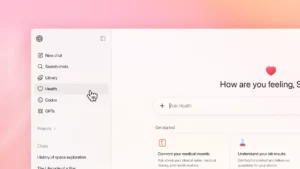Inflation: Why the ECB is still not raising interest rates

The inflation in the Eurozone reached 7.5%. Driven by the Ukraine war and the Corona crisis, inflation has reached its highest level in 40 years in many places. But as we know: The key interest rate will stay where it is. The powerful European Central Bank (ECB) is based in Frankfurt, and a few days ago it made another decision: the interest rate for the main refinancing operations and the interest rates for the marginal lending facility and the deposit facility will remain unchanged at 0.00%, 0.25% and -0.50% left.
Some economic researchers are now saying that inflation in Europe could even reach double digits (i.e. 10% and more) in the upcoming months of this year. Of course, this upsets many observers and experts. Why is the ECB still not acting? How high does the inflation rate have to rise? Referred to as the Fed, the US Federal Reserve has already reacted and on March 16, for the first time since the beginning of the corona pandemic, raised the key interest rate for the world’s largest economy by 0.25% to a range of 0.25 to 0.5%.
The US has already acted, the EU is waiting
In addition, the Fed’s balance sheet is to be reduced by maturing up to $95 billion worth of bonds ($60 billion in Treasuries and $35 billion in mortgage bonds per month) without buying new ones. If money and loans become more expensive, this naturally depresses the mood to invest – and as has been reported several times, this resulted in the prices of leading stock indices and crypto-assets falling.
But back to the euro area: Why isn’t the ECB acting even though the roof is on fire? High single-digit, even double-digit inflation rates are foreseeable, energy prices have increased drastically, and low earners, in particular, are suffering from the price surge. But from Frankfurt, it goes on: The key interest rate will remain at zero, and the biggest gun against inflation will not be ramped up.
However, this is not malice on the part of the ECB officials but is based on the system of monetary policy. Because before the turnaround in interest rates can be initiated, the purchase programs must come to an end. The PEPP (pandemic emergency purchase program) ended at the end of March 2022 – it was the instrument through which the ECB used to pump massive amounts of fresh money into the economy hit by Corona by means of bond purchases. So PEPP is history, but there are still APP. This is the asset purchase program that dates back to the pre-Corona period – this too has so far been used to pump money into the economy.
“Would be really bad for the banks”
Now APP (Asset Purchase Program) is to be scaled back faster than planned. “Monthly net purchases under the APP will amount to €40 billion in April, €30 billion in May and €20 billion in June,” the ECB said. Further, net asset purchases under the APP are expected to end in the third quarter. Logically, APP should fall from €10 billion in July to zero in August – and then the interest rate turnaround can come in the third quarter (July – September).
But why do we have to wait for the end of the APP and not raise the key interest rate before then? Before interest rates are raised, the purchase programs must be phased out. Otherwise, there would be an inversion of the yield curve, which would be very bad for the banks. The banks do their business with maturity transformation: they take money from deposits in the short term and lend it out in the long term. If they had to pay high-interest rates in the short term and get low-interest rates in the long term, then their business model would be dead, explains Fabio Rumler, Lead Economist in the Department of Economic Analysis at the Austrian National Bank. “That’s why the so-called sequencing must be observed: First close the purchase programs and then raise the interest rate.”
At the beginning of 2022, hardly anyone expected interest rates to rise in the euro area, but given the changed situation, it is likely that it could be as far as July. So it remains exciting.





























